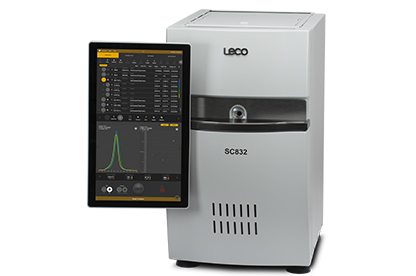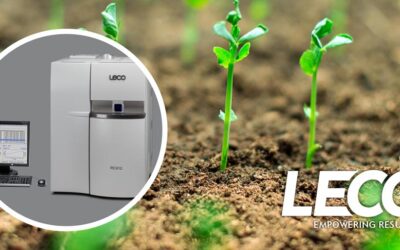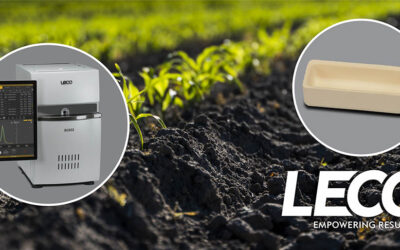 Sulfur is an essential nutrient in crop production. It is vital for the production of chlorophyll and several amino acids that form protein, among other functions in plants. In recent years, the world has been paying more attention to sulfur emissions, trying to minimize SO2 in the air, which in turn minimizes the sulfur deposited naturally in the fields. When combined with the trend toward high-yield crop production in many areas of the world, knowing the actual level of sulfur in your fields has become even more important. Sulfur can also be measured in plant tissues, and then, of course, knowing the sulfur content of fertilizer is also necessary to correct any sulfur deficiencies or excess in your fields. All of these sulfur determinations can be handled with a single combustion instrument from LECO.
Sulfur is an essential nutrient in crop production. It is vital for the production of chlorophyll and several amino acids that form protein, among other functions in plants. In recent years, the world has been paying more attention to sulfur emissions, trying to minimize SO2 in the air, which in turn minimizes the sulfur deposited naturally in the fields. When combined with the trend toward high-yield crop production in many areas of the world, knowing the actual level of sulfur in your fields has become even more important. Sulfur can also be measured in plant tissues, and then, of course, knowing the sulfur content of fertilizer is also necessary to correct any sulfur deficiencies or excess in your fields. All of these sulfur determinations can be handled with a single combustion instrument from LECO.

The CNS928 is also a horizontal combustion furnace with a pure oxygen environment using ceramic combustion boats, but it has more intricate plumbing, enabling it to handle simultaneous carbon and nitrogen determination. With the CNS928, combustion gases are collected in a ballast where they equilibrate and mix before an aliquot is taken and injected into a stream of inert carrier gas (helium or argon) for analysis. This extra process adds only a couple minutes to the analysis time, bringing it up to 5 minutes.

Register below to listen to LECO’s Lloyd Allen talk about the capabilities and methodologies used with these instrument families and his preferences when it comes to analyzing sulfur in agricultural applications with this on-demand webinar, the second in LECO’s Agricultural Analysis webinar series.





